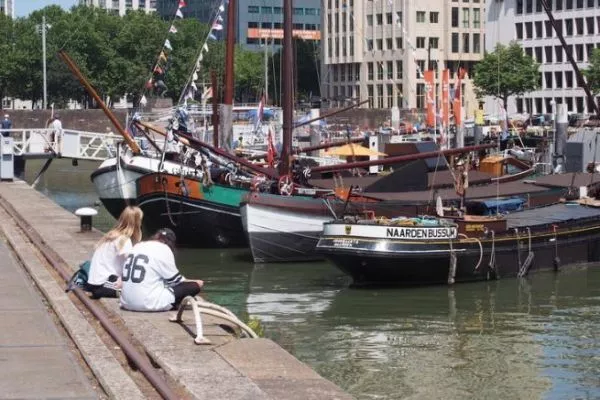Rotterdam Port, the largest in Europe, exemplifies efficient global trade logistics. This expansive facility handles massive cargo volumes, connecting the continent to worldwide markets. Strategically positioned at the Rhine delta, it facilitates seamless transport via rivers and sea routes. The port authority oversees operations, ensuring sustainability and innovation. For maritime enthusiasts, Rotterdam Port represents a benchmark in modern shipping.
Evolution and Historical Significance
The port’s origins trace to the 13th century as a fishing village on the Rotte River. By 1340, it gained city rights, evolving into a regional hub. The 19th century’s Industrial Revolution spurred growth, with the Nieuwe Waterweg canal in 1872 providing direct North Sea access. This boosted trade, making Rotterdam a key player in coal and steel.
Post-World War II reconstruction modernized the port, adding petrochemical facilities in the 1930s and container terminals in the 1970s. Expansions like Europoort in the 1960s and Maasvlakte in the 1970s extended it seaward. By 1962, it surpassed New York as the world’s largest port. Today, it spans 105 square kilometers, handling 467 million tonnes annually.
Advanced Facilities and Infrastructure
Rotterdam Port covers 10,500 hectares, including five areas and three distribution parks. It features 70 kilometers of quays, accommodating vessels up to 24-meter draft. Key zones include Waalhaven for containers, Botlek for industry, and Maasvlakte for deep-sea operations. Automated terminals like those at Maasvlakte 2 use robotic cranes for efficiency.
The port supports diverse cargo: dry bulk, liquid bulk, and 14.4 million TEUs. Pipelines connect to inland Europe, while rail and road networks enhance hinterland access. Environmental measures, like the Maeslantkering barrier, protect against surges. These facilities make it a 24/7 hub for global shipping.
Economic Role and Global Connectivity
As Europe’s gateway, Rotterdam Port serves over 500 million consumers. It generates €29.6 billion in added value, 3.2% of Dutch GDP, employing 192,000 directly. In 2022, it processed 436 million tonnes, ranking third globally. Connections to 1,000 ports worldwide, plus inland via Rhine, ensure efficient distribution.
The petrochemical sector dominates, with refineries processing crude oil. Grain and general cargo transshipment supports agriculture and manufacturing. Investments in biofuels and LNG position it for green transitions. Its role in supply chains underscores economic resilience.
Sustainability and Future Developments
Rotterdam Port aims for emissions-free status by 2050, with incentives for clean shipping. Wind turbines and bioenergy projects reduce environmental impact. The Delta Works include flood barriers for climate resilience. Maasvlakte 2 expansion adds capacity without new land reclamation.
Ongoing innovations include digital tracking and autonomous operations. Plans for deeper berths accommodate mega-ships. These efforts balance growth with sustainability, ensuring long-term viability.
Operational Excellence and Challenges
The port handles 28,000 seagoing and 91,000 inland vessels yearly. Security follows ISPS codes, with X-ray screening and command centers. Challenges like congestion are addressed through automation and expansions. Its depth and tide-free access minimize delays.
Collaborations with partners enhance efficiency. As a logistics leader, Rotterdam Port adapts to global shifts, maintaining its top status.

 Rotterdam Port: Europe’s Premier Maritime Gateway">
Rotterdam Port: Europe’s Premier Maritime Gateway">
